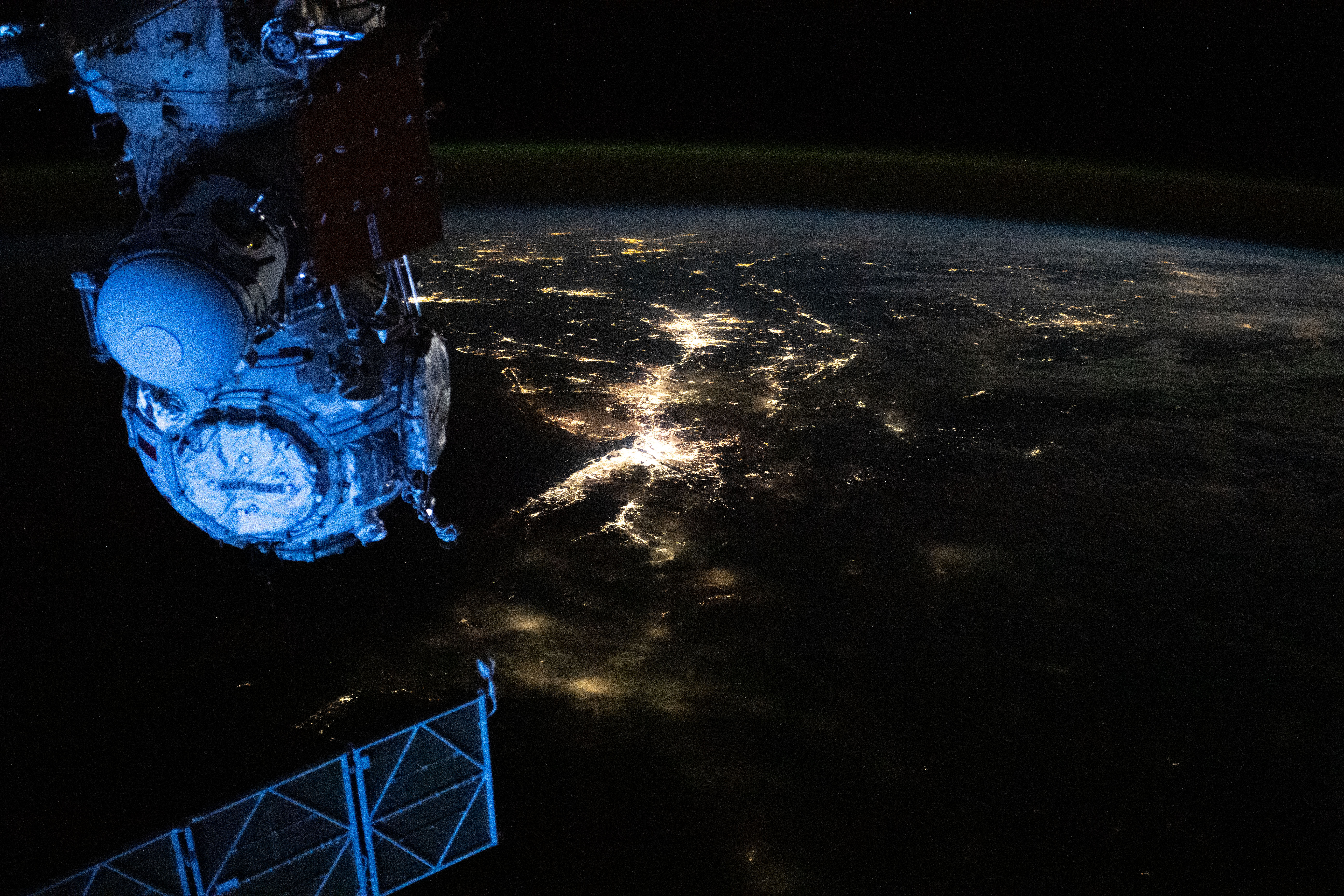Hubble’s Multi-Wavelength View of Recently-Released Webb Image
Hubble is sharing a brand new galaxy image every day through October 7, 2023! Visit our website daily, or follow along on X, Facebook, and Instagram. Patches of bright pink and wisps of dark red paint the foreground of this new NASA Hubble Space Telescope image. NGC 5068 is a barred spiral galaxy with thousands […]

2 min read
Hubble’s Multi-Wavelength View of Recently-Released Webb Image

Hubble is sharing a brand new galaxy image every day through October 7, 2023!
Visit our website daily, or follow along on X, Facebook, and Instagram.
Patches of bright pink and wisps of dark red paint the foreground of this new NASA Hubble Space Telescope image. NGC 5068 is a barred spiral galaxy with thousands of star-forming regions and large quantities of interstellar dust. First discovered by British astronomer William Herschel in 1785, NGC 5068 sits in the southern region of the constellation Virgo and is around 20 million light-years away. Astronomers estimate the galaxy is 45,000 light-years in diameter.
At the top center of this image lies NGC 5068’s bright central bar, a densely packed region of mature stars. A black hole lurks behind the bar, tugging the stars together with its intense gravitational pull. The bright pinkish-red splotches along the bottom and sides of the image are regions of ionized hydrogen gas where young star clusters lie. Though not very clear from this angle, these splotches are along the galaxy’s spiral arms, where new stars typically form.
Astronomers also found at least 110 Wolf-Rayet stars in NGC 5068. Wolf-Rayet stars are a type of old, massive star that loses mass at a very high rate. They are typically more than 25 times the mass of our Sun and up to a million times more luminous. There are about 220 Wolf-Rayet stars in our Milky Way galaxy.
NGC 5068 is difficult to see with human eyes because it has relatively low surface brightness. Luckily, Hubble’s ultraviolet, visible, and near-infrared capabilities helped capture the beauty and intrigue of this galaxy. Different cosmic objects emit different wavelengths of light; young and hot stars emit ultraviolet light, so Hubble uses ultraviolet observations to find them.

In June of 2023, NASA’s James Webb Space Telescope released its own infrared image of NGC 5068 as part of a science campaign to learn more about star formation in gaseous regions of nearby galaxies. Many of Webb’s observations are building on earlier Hubble observations, specifically a collection of 10,000 images of star clusters.
Media Contact:
Claire Andreoli
NASA’s Goddard Space Flight Center, Greenbelt, MD
claire.andreoli@nasa.gov
Share
Details
Related Terms
What's Your Reaction?











































